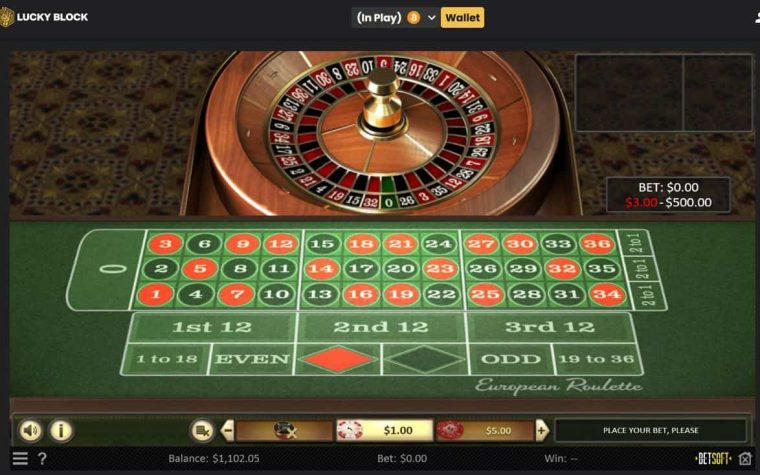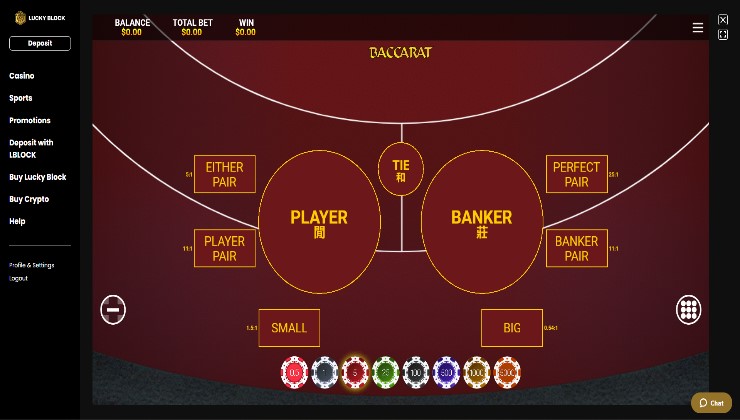Some bettors are happy to place their wagers more or less at random. Many bettors, however, like to have more structure in their betting. One of the best ways to gain this is by following a betting system, and – of those – progressive betting is the most popular.
In this article, you’ll learn everything you need to know about progressive betting. We’ll explain both positive and negative progression, give examples of popular systems in each case, and list the pros and cons of each form.
What Is Progressive Betting?

As you probably know, all types of online gambling include a house edge. This applies to sports betting just like it does to casino games. In sports betting, it’s usually clear (for example, the dealer going second in blackjack). In casino games, it appears as a ‘vig’ (or ‘overround’), where the implied odds don’t total 100%. This guarantees that the bookmaker earns a profit in the long term.
To help try and gain and advantage, bettors try to use betting systems. Some are very specific, including those we’ll look at shortly, while others are more general (like betting underdogs and betting the dealer).
Progressive betting is the most common format for these systems. Quite simply, it means that you don’t always place the same stakes. Instead, your stakes will change from bet to bet, depending on the outcome of the previous wager.
These changes can be sorted into two main categories: positive progression, and negative progression. We’ll explain both types of progressive betting in more detail shortly. For now, here is the very basic strategy involved in each case.
Positive Progression
Negative Progression
Increase stakes after a winning bet
Increase stakes after a losing bet
Decrease stakes after a losing bet
Decrease stakes after a winning bet
Positive Progression 101 – Everything You Need to Know
For clarity, it’s not that ‘positive’ progression is ‘good’ and negative progression is ‘bad’. Both types of progressive betting aim to help you make money! The terms positive and progressive simply indicate whether you’re increasing or decreasing your bets after winning.
With that cleared up, let’s look in more detail at positive progressive betting.
As noted, with positive progression you increase your stakes after winning wagers, and decrease them after losing wagers. As such, the main focus here is on actively winning more money (rather than avoiding or recovering losses, as with negative progression).
We wouldn’t describe these betting systems as actually being more aggressive. In both formats, you’ll be placing progressively bigger stakes as you go. You’re just doing so in different ways.
It could be argued that positive progression betting is a safer option. It is designed to capitalize on winning streaks. If you start losing, your stakes are lowered accordingly to minimize those losses. We’ll see how this contrasts with negative progression systems shortly.
The best way to fully understand this format – whether you’re interested in roulette progressive betting or another form – is to look at some examples. Here are four of the most popular positive progression betting systems.
The Paroli Betting System
The Paroli system has been around since the 17th century. Even after all these years, it remains one of the most popular progressive betting tactics.
Technically, this isn’t exactly a textbook positive progressive system. That’s because, instead of lowering your stakes after a loss, you actually keep them exactly the same. Going in, you decide what your base stake will be (e.g. $10). Thereafter, whenever you lose, you just go back to betting that base stake.
The Paroli does, however, involve increasing your stakes after wins. In fact, you’ll double them. Using our $10 base stake example, this means you’d be betting $20 after winning one wager, then $40 after winning a second.
Here’s the smart part, though. If you win three straight bets, the cycle is over. You accept those winnings, then – if you want to continue – you go right back to the start, with your original base stake.
Admittedly, this means that there’s a cap on your winnings. You’re far more likely to win three straight wagers than four, however, so the Paroli helps you lock in profits before your winning streak is broken. It’s therefore one of the safest and most sensible examples of positive progressive gambling and a popular blackjack betting strategy.
The 1-3-2-6 System

The 1-3-2-6 system is slightly more complicated than the Paroli. It’s still pretty straightforward to follow though, and is another classic example of positive progressive betting.
The numbers here simply determine the stake sizes you place. The ‘1’ represents your base unit size, such as $10, which is what you’ll place on your first wager. If that first bet wins, you then move onto the ‘3’, which will be $30 (3 x $10). If you continue to win, you then wager two times and six times your initial stake, for the ‘2’ and ‘6’ parts of the sequence respectively.
If you lose at any point, you simply go back to the start of the sequence, and bet $10 again. If you win four times in a row, and get to the end of the sequence, then you collect your winnings and either stop playing or begin again with $10.
As with the Paroli, the advantage here is that you have a clear point at which to stop and simply accept your profits, rather than trying to get more and more money. There’s also relatively little risk, since you won’t be out of pocket if you lose during your winning streak, and – even if you lose initially – are only down one unit size.
The disadvantage (aside from the fact there’s no guarantee you’ll win any of your initial wagers), is that it can only really be used on even-odds gambles. In addition, that aforementioned limit on your potential profit may be seen as a negative by more aggressive bettors. 1-3-2-6 is a popular baccarat betting system.
Oscar’s Grind Betting

To an extent, we’ve seen already – in our previous two examples – that positive progression is generally about aiming for realistic, restrained profits, rather than targeting massive wins or relying on huge hot streaks.
Oscar’s Grind exemplifies this more than any other such betting system. As the name suggests, the aim here is to ‘grind’ your way to smaller profits over a sustained period of time, as outlined in Joseph Randall’s report, “How to Beat the Casinos”. The way it works, however, is intriguing to say the least.
As usual, you start here by setting a basic unit size. Once again, we’ll use $10 for simplicity. For your first wager (which – like all subsequent bets – must be a 50/50 gamble), if you end up winning, then you simply accept those profits and the ‘session’ is ended. If you lose that first bet, however, that’s when the system activates.
Continue to lose, and you also continue only using your base unit stake. Once you hit a win during that losing streak, however, you increase the stake by one unit. Let’s run through a quick example:
- Bet $10 and lose – down $10 overall
- Bet $10 and lose – down $20 overall
- Bet $10 and lose – down $30 overall
- Bet $10 and win – down $20 overall
- Bet $20 and win – up $20 overall
In that final wager, you’ve increased your stake size by one unit to make it $20. Your winnings were $40 (at even odds), so you’re now up $20 overall.
Each session ends when you’ve made the equivalent of at least one unit’s profit. So, in the above example, the session would be ended, since we’re now more than $10 up. As you can see, this system is designed to get regular, small profits, which – if you play long enough – will add up to bigger winnings. It won’t be as suited to more aggressive bettors as either the Paroli or 1-3-2-6, therefore, since the cap on your winnings ‘per session’ is much smaller, but should definitely appeal to the more cautious players among you and is a great roulette betting system.
Pros & Cons of Positive Progressive Betting
As we’ve touched upon in these reviews of popular positive progression systems, this approach does have both its strong and weak points. We’ve summarized the main examples of both for you below.
Pros
- Profits-Focused – Positive progression is arguably the more fun route to take, since it is indeed more ‘positive’ in its outlook. The name of the game in gambling is to hit on wins, and that’s exactly what positive progressive betting is designed to do (rather than cut down on your losses, like negative progressive systems).
- Easy to Follow – As you’ll surely have seen in our above examples, positive progressive systems can be incredibly easy to follow. They’re usually as simple as doubling your stakes, or moving through a predetermined multiplier of your unit size. As such, these are beginner-friendly, but can still help more experienced gamblers.
- Sensible Approach – There are plenty of positive progression systems out there, some of which are extremely aggressive. The ones we’ve listed here, however, are more focused on delivering smaller, but regular profits, while keeping your exposure to losses nice and low.
Cons
- Limited Applications – This is a problem with many betting systems, including centered around positive progression. Technically, they can be used on both sports betting and casino games. You will usually need to be placing 50/50 wagers on table games or sports bets, however, for them to actually work. If you start using different odds, then the sums simply don’t work any more.
- Gambler’s Fallacy Questions – Gambler’s Fallacy is the belief that prior results impact subsequent outcomes. If you’ve been on a losing streak, for example, you feel that you must be ‘due’ a win eventually.
There’s never any guarantee that will happen, however, and that’s where positive progression systems can fail. Most obviously, if it takes a while to hit that first win – and for the system to kick in – you might have a significant loss to make up before you even think about profiting.
What Is Negative Progression?
Again, we want to make it clear that – just because you’re following one of these systems – it doesn’t mean you’re a ‘negative’ person, or have a ‘negative’ mindset. This is simply the technical term for the system.
As you can probably guess, negative progression systems are the inverse of their positive counterparts. Rather than increasing your stakes after wins, you increase them after losses. You also reduce your stakes after winning wagers.
The primary purpose of negative progression is, therefore, to reduce your losses – or eliminate them entirely. Again though, there’s plenty of variance in how different systems do so, as you can see below.
Martingale Betting System

The Martingale is arguably the most famous roulette betting system around. It also happens to be a classic example of negative progression betting.
You start off with the Martingale System by deciding your stake size – let’s say it’s $10. If you win a wager, you simply keep betting $10. You continue to do so until you lose. When you do lose, you double the size of your next stake – in this case to $20. If you lose again, you double it again- to $40, $80, $160, and so on.
The theory here is that – even if you go on a losing streak – you’ll eventually win. When you do (assuming you’re placing 50/50 wagers, like red/black in roulette), you’ll get all your losses back in one go. After that has happened, you can simply go back to placing new wagers using your regular, $10 starting stake.
The theory here is just fine. The problem, as with most negative progression systems, is that it assumes an infinite bankroll. ‘Eventually’ you’ll end your losing streak, but you’ve got no idea when that will actually happen. Doubling your stakes on losing wagers will get your losses back in the end… but you might use up your entire bankroll before that happens.
In short, the Martingale is a beginner-friendly negative progression system which will work in theory. But it’s crucial that you use a small initial stake size in comparison to your overall bankroll (most bettors like to use 10% at most), to minimize the risk of spending all your money.
D’Alembert Betting

The D’Alembert is even more of a textbook negative progression system than the Martingale, and a favored Craps betting system. That’s because it both increases your stakes after losses, and reduces them after wins too (while the Martingale only does the former).
Like other such systems, the D’Alembert is designed exclusively for 50/50 gambles – black/red in roulette, even-odds sports wagers, and so on. You also get the ball rolling by identifying your starting unit size (again, most players use 10% of their bankroll as a guideline).
To start off with, you bet one unit. If that bet loses, you simply increase your next wager by one unit, then one more unit if you lose again, and so on.
Where the D’Alembert comes into its own, however, is in your wins. When you win, you’ll also decrease your stake size by one unit each time.
The D’Alembert will therefore not only help you to reduce your losses. It will also help you to save smaller profits as you win wagers, thus aiding your bottom line on successful and unsuccessful bets.
Fibonacci Betting
Chances are you’ve heard of the Fibonacci sequence before, since it’s one of the most famous patterns in mathematics. To jog your memory, it’s the one where the next number equals the two previous ones added together: 1, 1, 2, 3, 5, 8, 13, 21, and so on.
As you may already be able to guess, this sequence also forms the basis of this betting system. You start off by betting a unit of your chosen size. If it loses, you start moving along the sequence. With a starting stake of $10, for example, after a loss you’d bet $10, $20, $30, and so on. That’s the ‘negative progression’, in this case.
Keep following the sequence, and – eventually – you’ll hit a win and get your money back. The obvious flaw, however – as with all such systems – is that you don’t know when that’ll happen, and could therefore suffer big losses in the process. In fairness though, you have less exposure here than with systems that ramp up your stakes even faster – by doubling them, for example.
Blackjack is a popular game for using the Fibonacci system, and is sports betting. For example, according to Archontakis and Osborne, betting on draws at odds of 3 in football has a higher change of rendering a win.
The Labouchere System
While the Labouchere is certainly a negative progression system, the actual manner in which that betting progression works is highly unusual. This is probably the most advanced system we’ve studied here, but it’s still not hard – by any means – to get your head around.
You start off by identifying your unit size, then writing down a series of numbers. You could just write down the numbers 1-6, for example. For your first stake size, you just add together the first and last numbers, and multiply that by your base unit. In our prior example, if your unit size is $10, you’d add together 1 and 6 to get 7, so your first bet would be $70.
If that bet loses, you add it to the end of the sequence. So, now you’ve got the numbers 1-7. You’ll then bet $80 (8 x (1+7)). If that bet loses, you add 8 to the sequence, and so on.
If you win, however,then you cross off both the numbers you just used. Let’s say your sequence got to 1-8. In that case, you’d have bet $90 (1+8), and won $90 (this system applies to 50/50 bets, as usual). You’d then cross off 1 and 8, and use the number 2 and 7 next time. Overall, if you keep going, you’ll cross off all the numbers and end up getting your money back.
The Labouchere certainly works in theory, and is perhaps a more fun way of doing things than the previous few systems. The clear fear, of course, is that you have no idea when you’ll stop adding numbers to that sequence, with your stakes getting bigger all the time. Baccarat is a popular game for using the Labouchere system.
Pros & Cons of Negative Progressive Betting Systems
Like its positive counterpart, negative progression betting isn’t a sure thing by any means. Here are the main pros and cons of using systems like these for online gambling.
Pros
- (Theoretically) Eliminate Losses – It might sound more exciting to prioritize winning wagers. But the reality is that both wins and losses affect your bottom line, and cutting down on your losses – which is what negative progression systems are designed for – is designed to do just that.
- Very Straightforward – Some of the systems we’ve reviewed might be slightly more straightforward than others. In reality though, none of them are particularly difficult, since all follow clearly-defined patterns which have already been determined for you. All you have to do is plug in your unit size, and place the bets, making them much more approachable than card counting, for example.
- Can Gain Winnings – Admittedly, most negative progression systems are focused on recovering your losses. There are definitely some systems though – with the D’Alembert being a great example – which affect winning wagers, and help you put away a portion of your profits for the future.
Cons
- Assume An Unlimited Bankroll – The success of negative progression betting can never be assumed, however smart the system might seem. Even more so than with positive progression, that’s because – to absolutely guarantee success – they would require an unlimited bankroll. Otherwise you could simply be subject to a run of extremely bad luck, as can always happen in games of chance. In turn you can end up raising your stakes so high – to try and recover your losses – that it swallows up your bankroll.
- Lack of Flexibility – While they might differ in their approach, negative progression systems suffer a similar lack of flexibility to positive ones. Namely, they must be used for 50/50 betting propositions. That’s completely fine if you’re looking for baccarat progressive betting systems, for example (assuming you ignore the tie), but not if you’re looking for something more malleable for your sports betting or poker play.
Do Progressive Betting Systems Work?
That’s the million-dollar question for progressive betting, of course. Unfortunately, the answer isn’t straightforward.
In short, these systems work… in theory. For most such systems that have stood the test of time, and are popular today, the mathematics is sound. Keep doubling your losing wager, for example, as you do in the Martingale, and eventually – when you do win – you will indeed recover your original losing stake.
The problem is that – as has been known to happen in gambling – the reality won’t always match the theory. In the Martingale, for example, the chances are certainly that you’ll hit on a win after a few losing wagers, and therefore get your money back. There is no guarantee whatsoever this will happen, however. And, in the meantime, your stakes could grow big enough to consume your bankroll.
In addition, we must state that these systems don’t actually affect your chances of winning wagers. They’ll certainly provide guidance for your stakes, but aren’t ‘strategies’, and won’t help you actually play games that involve some skill – like poker or online blackjack – any better.
To summarize, progressive betting offers no guarantees of success. It is based on solid theory, however, and will provide some highly useful guidance in your gambling.


